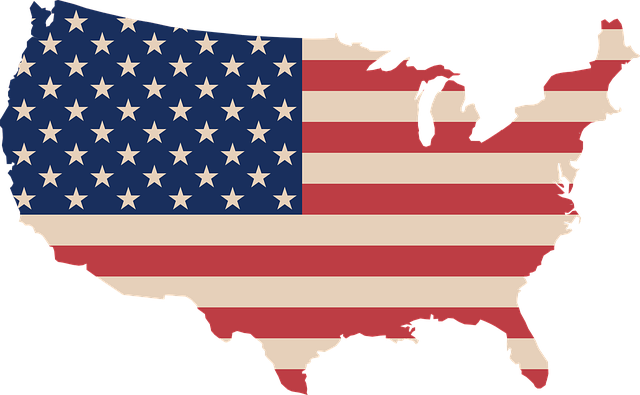When discussing North America, it’s essential to distinguish between the concept of a state as a region of governance and its use in a broader geographical context. North America, a continent stretching from the Arctic Circle to the Isthmus of Panama, comprises three primary countries: the United States of America, Canada, and Mexico. However, the term state can be misleading as it refers to different administrative structures in each country. This article aims to explore the number of states in North America, specifically focusing on those within the United States, and to a lesser extent, the political subdivisions of Canada and Mexico.
Understanding how many states exist in North America necessitates a detailed look at its countries’ administrative divisions. This exploration is not only key to grasping the political landscape of the continent but also provides insights into its diverse cultural, geographical, and economic characteristics. Let’s delve into the intricate world of North America’s states and their unique identities.
The United States of America: A Closer Look at the 50 States
The United States of America is a federal republic consisting of 50 states. Each state holds a degree of sovereignty, but all are bound together under the federal government as outlined in the U.S. Constitution. The states vary extensively in area, population, climate, economy, and culture. From the vast wilderness of Alaska to the bustling streets of New York, the United States offers a remarkable diversity encapsulated within its state borders.
A key feature of the U.S. is the autonomy each state has over its internal affairs, thereby making each one unique in its laws, policies, and governance. This autonomy allows states to function as individual entities while contributing to the federal system. For instance, differences in state tax systems, educational structures, and health care policies reflect the varied priorities and needs across the nation.
Below is a list of the 50 states, which includes some of the most well-known like California, Texas, and Florida, as well as less populous ones such as Wyoming and Vermont:
- Alabama
- Alaska
- Arizona
- Arkansas
- California
- Colorado
- Connecticut
- Delaware
- Florida
- Georgia
- Hawaii
- Idaho
- Illinois
- Indiana
- Iowa
- Kansas
- Kentucky
- Louisiana
- Maine
- Maryland
- Massachusetts
- Michigan
- Minnesota
- Mississippi
- Missouri
- Montana
- Nebraska
- Nevada
- New Hampshire
- New Jersey
- New Mexico
- New York
- North Carolina
- North Dakota
- Ohio
- Oklahoma
- Oregon
- Pennsylvania
- Rhode Island
- South Carolina
- South Dakota
- Tennessee
- Texas
- Utah
- Vermont
- Virginia
- Washington
- West Virginia
- Wisconsin
- Wyoming
Canada’s Provinces and Territories
Moving northward, Canada is divided not into states but into 10 provinces and 3 territories. Each province and territory has its system of government, but all are under the sovereignty of the Canadian Constitution. Provinces have more autonomy than territories, primarily due to their larger populations and economic roles within the country. The provincial governments have jurisdiction over many areas, including health care, education, and transportation, while the federal government retains control over territories with more direct involvement.
The diversity in Canada’s provinces and territories is immense, stretching from the French-speaking regions of Quebec to the Arctic regions of Nunavut. Each has its character and demographic, making Canada a mosaic of cultures and landscapes. Here are the provinces and territories of Canada:
Provinces:
- Alberta
- British Columbia
- Manitoba
- New Brunswick
- Newfoundland and Labrador
- Nova Scotia
- Ontario
- Prince Edward Island
- Quebec
- Saskatchewan
Territories:
- Northwest Territories
- Nunavut
- Yukon
Mexico’s States and Federal Entities
In contrast to its northern neighbors, Mexico is composed of 32 federal entities: 31 states and one federal district, Mexico City, which serves as the country’s capital. Similar to the United States, each Mexican state has its government with a high degree of legislative autonomy. This structure is vital for addressing the diverse needs of its population across varying climates and topographies—from the deserts of Sonora to the forests of Chiapas.
The states of Mexico are rich in history and culture, each contributing uniquely to the nation’s identity. Whether it’s the culinary traditions of Oaxaca or the artisan crafts of Michoacán, Mexico’s states are a testament to the country’s rich cultural tapestry. Here’s a breakdown of Mexico’s federal entities:
| No. | State Name |
|---|---|
| 1 | Aguascalientes |
| 2 | Baja California |
| 3 | Baja California Sur |
| 4 | Campeche |
| 5 | Chiapas |
| 6 | Chihuahua |
| 7 | Coahuila |
| 8 | Colima |
| 9 | Durango |
| 10 | Guanajuato |
| 11 | Guerrero |
| 12 | Hidalgo |
| 13 | Jalisco |
| 14 | Mexico State |
| 15 | Michoacán |
| 16 | Morelos |
| 17 | Nayarit |
| 18 | Nuevo León |
| 19 | Oaxaca |
| 20 | Puebla |
| 21 | Querétaro |
| 22 | Quintana Roo |
| 23 | San Luis Potosí |
| 24 | Sinaloa |
| 25 | Sonora |
| 26 | Tabasco |
| 27 | Tamaulipas |
| 28 | Tlaxcala |
| 29 | Veracruz |
| 30 | Yucatán |
| 31 | Zacatecas |
| 32 | Mexico City |
In conclusion, when asked, How many states are there in North America? the answer varies greatly depending on the context and the specific country in question. The United States is composed of 50 states, each with its distinct character and governance. Canada is organized into 10 provinces and 3 territories, reflecting its geographical diversity and cultural heritage. Mexico consists of 31 states and 1 federal district, each with its rich traditions and autonomy.
The concept of a state in North America is diverse and layered, encapsulating various forms of administrative, cultural, and geographical identities. This diversity is what makes North America uniquely complex and intriguing in its political and cultural landscape. Understanding the different states, provinces, and territories across the continent is key to appreciating the full scope of its diversity and richness.









